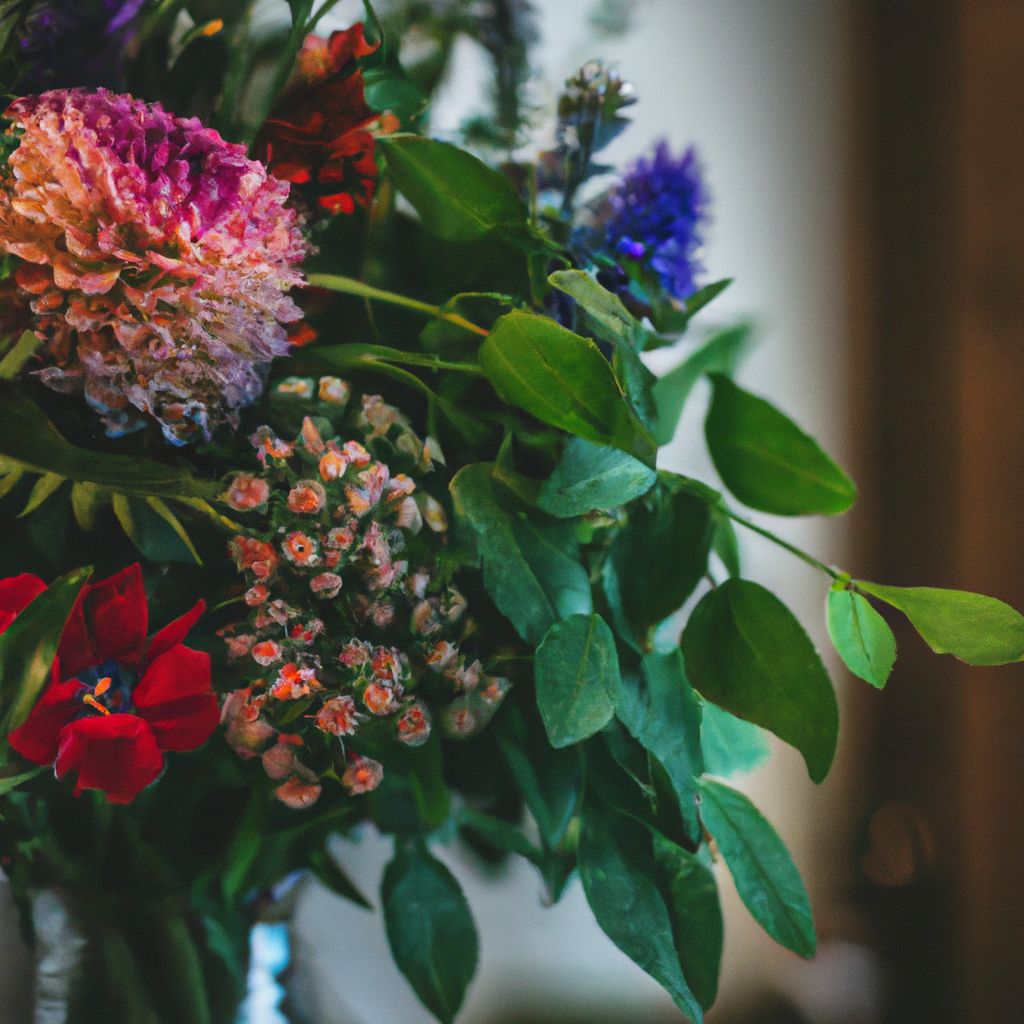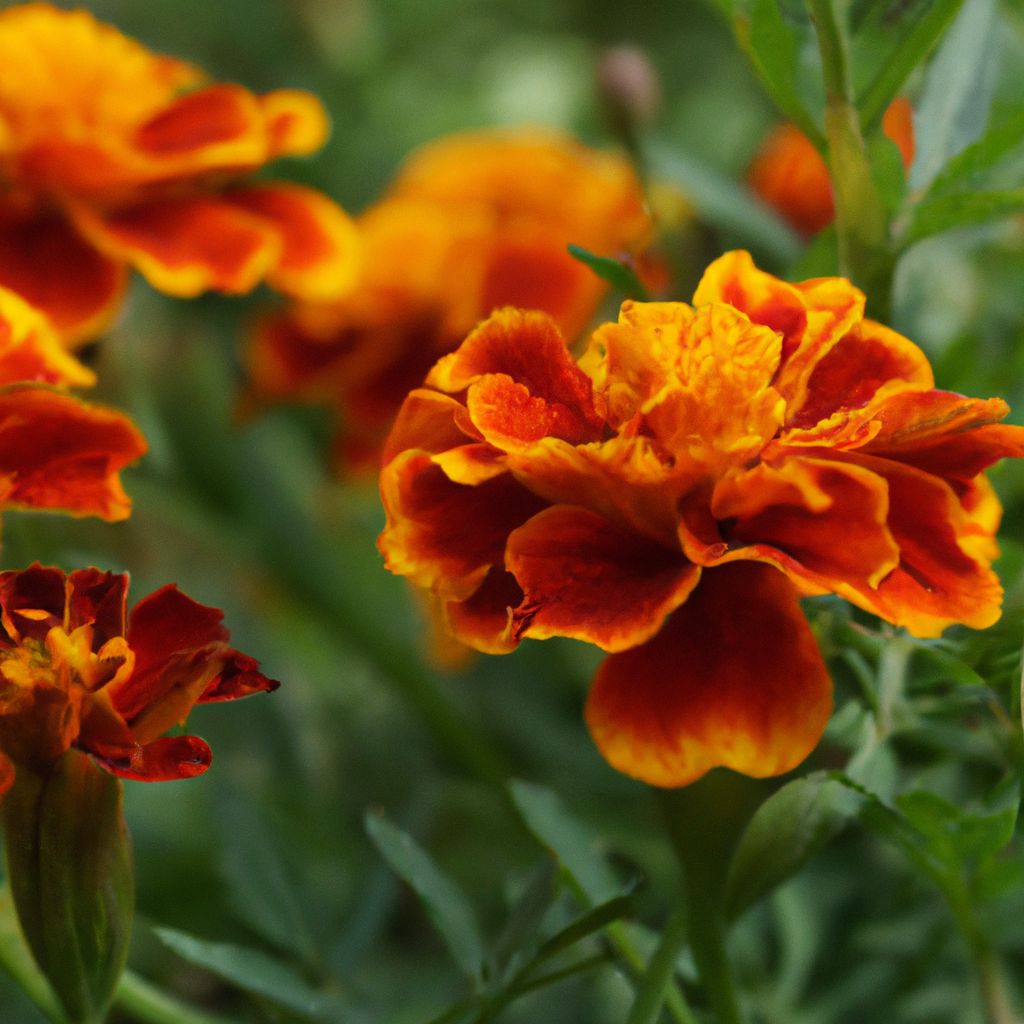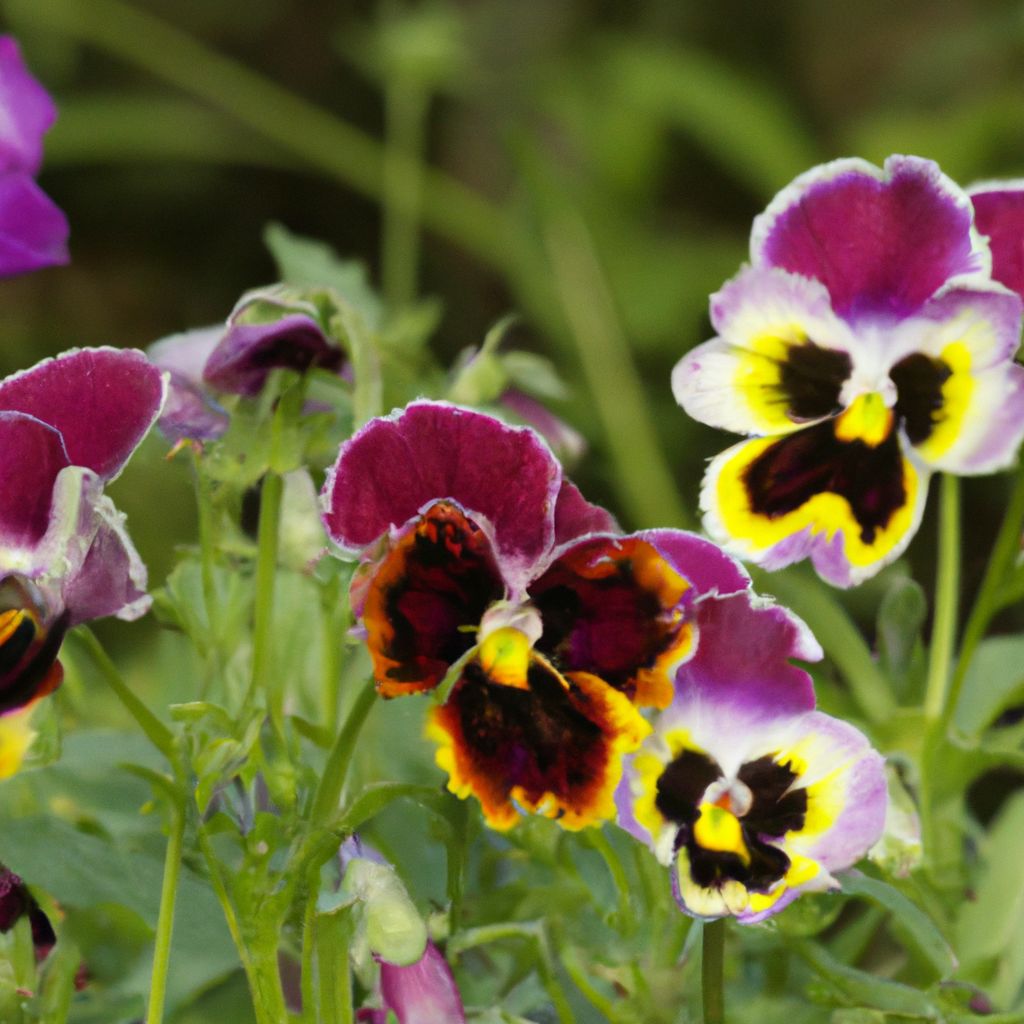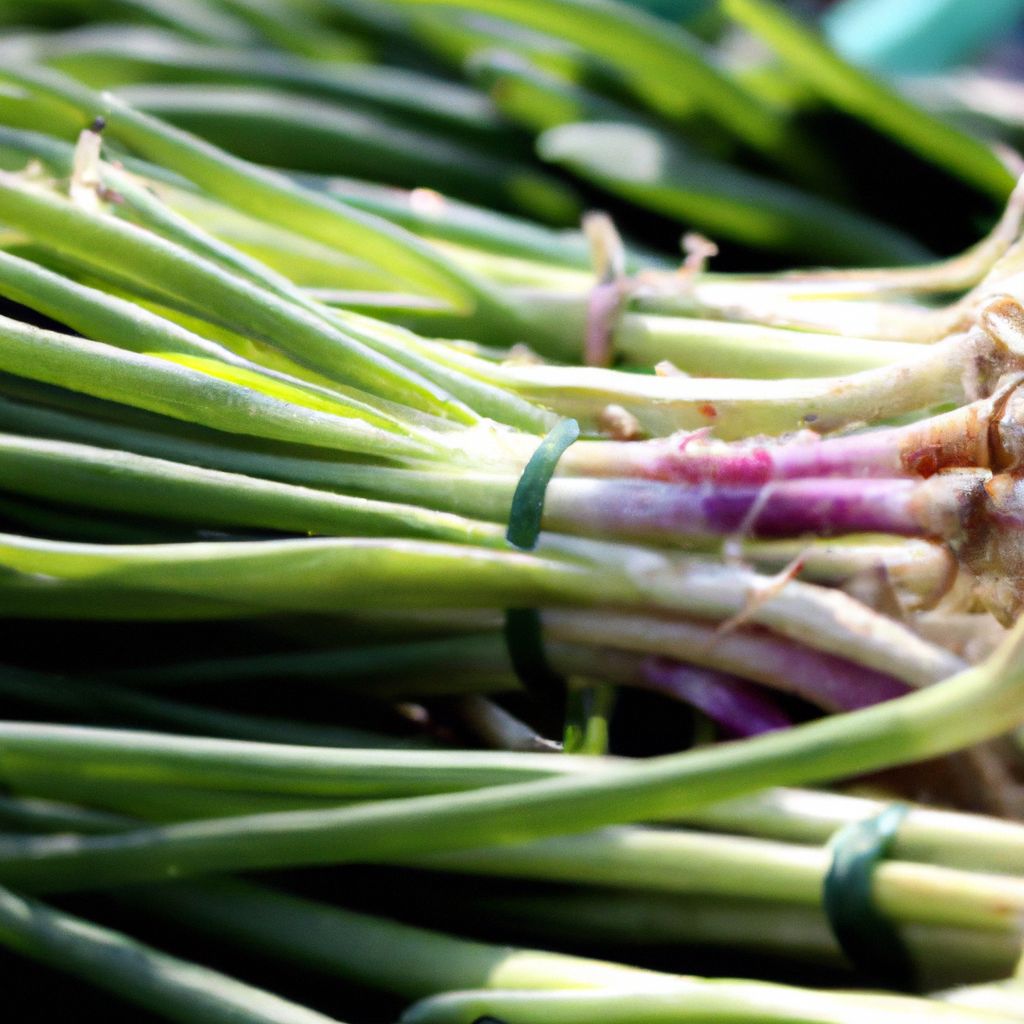Western Europe is home to many classic garden flowers that have been prized for centuries. With this guide, you can nurture the most popular flowers ,cultivated in Western Europe as they have been for ages. With proper care, many of these beautiful blooms can be grown successfully both outdoors and indoors, allowing you to enjoy their charm year-round.
Choosing the Right Western European Flowers
Many timeless flowers originate from the regions of Western Europe. Here are some top picks that can thrive indoors:
Roses
These classic beauties are available in hundreds of varieties. For indoor growing, choose miniature roses or patio roses which are compact and suited to containers. Miniature roses produce abundant petite blooms all season long.
Peonies
Peonies flourish in cooler climates like Western Europe. These perennials are known for their huge, romantic blooms in late spring upon bushy compact plants. Grow peonies in pots to control their size.
Tulips
Tulips provide a burst of spring color. Plant bulbs in fall and enjoy vibrant cups blooms in a rainbow of hues come spring. Forced tulips make ideal indoor cut flowers. Choose reblooming varieties.
Iris
Irises come in a diverse range of colors like purple, blue, yellow, white, pink, and apricot. The elegant blooms sit atop slender stems. Look for reblooming iris varieties to maximize indoor flowers.
Lavender
Adored for its relaxing scent and pretty purple-blue flower spikes, lavender is an aromatic herb perfect for windowsills. English lavender varieties like Munstead and Hidcote do well indoors.
Hydrangea
Hydrangeas produce showy mophead blossoms in white, pink, purple, and blue. Give them bright light indoors. Oakleaf and smooth hydrangeas have conical blossoms.

Providing Optimal Growing Conditions
Creating the right indoor environment will enable Western European flowers to thrive and reach their full potential.
Bright Lighting
Most classic European flowers require very bright light to bloom properly.
- Aim for 4-6 hours of direct sunlight each day. South or west facing windows are ideal.
- Supplement with grow lights if adequate natural light is unavailable.
- LED full spectrum grow lights work well for flowering plants.
Moderate Temperatures
- Maintain average indoor temperatures between 60-75°F during the daytime.
- Cooler nights around 55-60°F will help many varieties set buds and blooms.
Proper Watering
- Check soil moisture frequently and water when the top inch becomes dry.
- Take care not to overwater, as excess moisture can lead to root rot.
- Ensure containers have adequate drainage holes to prevent waterlogging.
Moderate Humidity
- Most Western European flowers grow fine at average room humidity.
- Misting leaves occasionally can boost moisture if needed.
- Use pebble trays for added humidity around the plants.
Rich, Well-Draining Soil
- Use a quality potting mix enriched with organic material.
- Amend soil with compost or worm castings to provide nutrients.
- Ensure soil drains well by adding perlite if needed.
Regular Fertilization
- Apply a balanced liquid fertilizer every 2-3 weeks during the active growing season.
- Reduce frequency in winter when plants are dormant.
- Look for fertilizers formulated for blooming plants.
Proper Containers
- Choose containers with drainage holes to prevent waterlogging.
- Re-pot plants each spring into fresh potting mix to fuel growth.
- Prune back overgrown plants before re-potting to manage size.
Troubleshooting Common Problems
Even with good care, indoor flowers may still experience some issues. Catch problems early and treat them promptly.
Yellowing Leaves
Causes: Insufficient iron, overwatering, poor drainage, natural aging
Solutions:
- Treat with a chelated iron supplement.
- Check soil drainage and amend with perlite if too dense.
- Allow soil to dry out further between waterings.
Wilting or Drooping
Causes: Underwatering, root rot, pests, diseases
Solutions:
- Rule out root rot and increase water if soil is very dry.
- Look for signs of pests like aphids. Treat any found.
- Remove affected leaves or stems to prevent spread of disease.
Leaf Spots
Causes: Fungal diseases, excess moisture, low light
Solutions:
- Water at the base of plants to keep leaves dry.
- Increase air circulation with a fan to reduce humidity.
- Apply fungicidal spray and remove badly affected leaves.
Leggy Growth
Causes: Insufficient light, lack of pruning
Solutions:
- Provide brighter light conditions.
- Prune back overgrown, leggy stems to reshape plant.
- Use grow lights to supplement natural lighting.
Failure to Bloom
Causes: Improper temperatures, insufficient light, over-fertilizing
Solutions:
- Ensure plants receive cooler nights around 60-65°F.
- Provide very bright light for at least 4-6 hours per day.
- Avoid over-fertilization which can inhibit blooming.
Insect Pests
Causes: Aphids, spider mites, mealybugs, scale, thrips
Solutions:
- Isolate affected plants immediately to prevent spreading.
- Remove pests manually by spraying off with water or pruning away affected parts.
- Apply insecticidal soaps or neem oil as needed for heavy infestations.
Petal Drop
Causes: Temperature swings, overwatering, ethylene exposure
Solutions:
- Maintain stable temperatures between 60-75°F.
- Allow soil to dry out between waterings.
- Avoid placing plants near fruits which emit ethylene gas.
With attentive growing conditions and proper care, many issues can be prevented or resolved, allowing Western European flowers to thrive indoors.
Caring for Popular Western European Flowers

Follow these tips specific to some classic European blooms to help them prosper indoors.
Growing Roses Indoors
- Light: At least 4 hours of direct sun per day. Move outside in summer if possible.
- Temperature: Keep between 60-75°F during the day and around 55-60°F at night.
- Watering: Water thoroughly when soil is partly dry. Avoid wetting foliage.
- Soil: Use a potting mix formulated for roses, amended with compost.
- Fertilizer: Use a balanced fertilizer every 2-4 weeks during the growing season.
- Pruning: Prune back in early spring to shape and remove dead stems. Make cuts just above an outward facing bud.
- Pests: Watch for aphids and treat with horticultural soap. Spider mites are also common.
Growing Tulips Indoors
- Planting: Plant bulbs in fall 8-10 weeks before desired bloom time. Place pointed side up.
- Chilling: Tulip bulbs require 12-15 weeks of temperatures below 45°F to bloom properly. Use a refrigerator.
- Forcing: After chilling period, bring pots to a bright, 60-65°F room to force blooms.
- Soil: Use a well-draining potting mix. Bulbs should not sit in wet soil.
- Light: Provide 12-14 hours of light per day for the best blooms. Supplement with grow lights.
- Care: Water sparingly to keep soil slightly moist but not soggy. Remove faded blooms. Discard bulbs after bloom.
Growing Lavender Indoors
- Light: At least 6 hours of bright sunlight daily. South-facing windows are ideal.
- Temperature: Keep between 55-65°F during the day and around 50°F at night.
- Watering: Allow soil to dry out between waterings. Do not overwater lavender.
- Soil: Use a very well-draining potting mix amended with sand or gravel.
- Fertilizer: Apply slow-release pellets in spring as lavender is sensitive to excess fertilizer.
- Pruning: Prune back by 1/3 after flowering to maintain a compact shape.
- Harvest: Cut stems to use fresh or dry. Can be harvested several times in a season with proper pruning.
Growing Peonies in Containers
- Varieties: Choose dwarf, compact varieties under 3 feet tall suited to pots like ‘Pink Hawaiian Coral’ or ‘Red Charm’.
- Sun: Place in a spot with at least 6 hours of full sun per day.
- Soil: Use a rich potting mix with added organic matter. Peonies thrive in nutrient-dense soil.
- Watering: Keep soil consistently moist, especially while buds are forming and flowering.
- Support: Use plant supports and prune carefully to prevent heavy blooms from flopping over.
- Fertilizer: Apply slow-release fertilizer tabs at planting time and reapply every spring.
- Overwintering: Provide protection in winter if temperatures fall below -20°F which can damage flower buds.
- Dividing: Divide dense clumps every 3-5 years after blooming to rejuvenate plants.
Growing Iris Indoors
- Types: Choose reblooming iris varieties like ‘Immortality’ or miniature iris like ‘Pauline’ which do well indoors.
- Sun: At least 4-6 hours of very bright, direct sun is essential for bloom.
- Soil: Use a very well-draining potting mix. Avoid wet soil.
- Watering: Water sparingly, allowing complete drying between waterings.
- Fertilizer: Apply diluted balanced liquid fertilizer every 2-4 weeks when actively growing.
- Reblooming: Remove faded blooms promptly by cutting back to the basal leaves to promote rebloom.
- Repotting: Repot rhizomes every 2-3 years in late summer, dividing any overcrowded clumps.
Displaying Western European Flowers Indoors
Incorporate classic European flowers into your indoor space for elegance and charm using these attractive display ideas:
- Create a stunning table centerpiece with a bouquet of roses, tulips, peonies, or other seasonal blooms.
- Line a bookshelf or fill empty wall corners with flowering plants for pops of color.
- Decoratively cluster pots of blooming plants like hydrangea and lavender on plant stands near windows.
- Place containers of flowers on outdoor porches or patios during the warmer months.
- Display flowering bulbs like tulips or hyacinths in cut glass vases around the home.
- Use blooming stems like roses or peonies as cut flowers for arrangements in vases.
- Create a charming indoor flower bed or border using a mix of potted European plants.
- Plant a container herb garden using lavender, thyme, oregano and other culinary herbs.
- Tuck small flowering plants into pretty cache pots or decorative baskets.
- Bring miniature or patio rose varieties indoors before frost to overwinter.
Common Types of Western European Flowers
Many of the most beloved garden flowers originate from Western Europe. Here is an overview:
Popular Perennials
- Roses – Available in shrub, climbing, and miniature blooming varieties. Endless selection of flower forms and colors.
- Peonies – Prized for their huge, lush blooms in late spring upon bushy plants. Often fragrant.
- Lavender – Gray-green aromatic foliage and pretty purple flower spikes. Essential herb.
- Foxgloves – Cottage garden classic with tall stalks of tubular flowers beloved by pollinators.
- Poppies – Cheerful blooms in summer with ruffled or crepe paper-like petals in many colors.
- Geraniums – Offering a long bloom season with clusters of simple, colorful flowers. Great in pots.
Beautiful Bulbs
- Tulips – Cup-shaped beauties heralding spring. Many hybrids available in a rainbow of colors.
- Hyacinths – Extremely fragrant flowers in colors like blue, pink, purple, peach, and white.
- Daffodils – Iconic spring blooms with trumpet or cup-shaped flowers. Easy to naturalize.
- Alliums – Globes of tiny flowers on slender stems. Ornamental seedheads.
- Crocuses – Delicate flowers in early spring often with striped or feathered petals.
Shrubs and Trees
- Lilac – Adored for its heady, nostalgic scent and showy spring blooms. Needs chill hours.
- Rhododendrons – Evergreen shrubs covered in large clustered blooms in shades of pink, purple and white.
- Magnolias – Elegant chalice-shaped blooms often with a citrus fragrance. Deciduous and evergreen types.
By nurturing a diverse collection, you can enjoy European flowers indoors nearly year-round.
Tips for Successfully Growing Western European Flowers Indoors

Follow this checklist to help provide ideal conditions for your indoor European flowers:
Choose a sunny south or west facing window for maximum light.
Supplement natural sunlight with grow lights if needed. LED full spectrum lights work well.
Maintain daytime temperatures between 60-75°F and cooler nights around 55-60°F.
Monitor soil moisture and water thoroughly when just the top inch becomes dry. Check below the surface too.
Use containers with drainage holes and well-draining commercial potting mixes.
Fertilize every 2-3 weeks during the growing season using balanced liquid fertilizers. Follow label dilution rates.
Repot into fresh soil annually in late winter or early spring before new growth emerges.
Disinfect tools and prune away any dead or damaged growth to maintain plant health.
Remove spent blooms by deadheading back to a node, leaf or bud.
Monitor for pests like aphids, mealybugs, scale or mites and treat any found immediately.
Move plants outside for the summer if possible for fresh air, increased light and humidity.
Enjoying Western European Flowers
Beyond simply admiring their beauty, there are many ways to enjoy the flowers of Western Europe at home:
- Display cut stems in vases and change the water every 2-3 days. Recut stems by an inch every 5 days.
- Create fragrant indoor potpourris and sachets using dried lavender, rose, lilac, and other scented flowers.
- Craft refreshing floral waters, teas, and other beverages infused with blooms like rose and lavender.
- Use edible flowers like violas, nasturtiums, and calendula to decorate salads, desserts, and cocktails.
- Make floral ice cubes by freezing individual flowers or flower petals in ice cube trays with water.
- Press or dry flowers between the pages of books to preserve them. Frame with artwork or shadowboxes.
- Capture flowering displays through photographs and sketches.
- Host a flower arranging workshop for friends to create table centerpieces together.
- Craft personalized flower potpourri mixes or bath salts as homemade gifts.

Final Tips for Nurturing Western European Flowers
With the right care, many cherished flowers from Europe can flourish indoors to provide year-round enjoyment:
- Ensure plants receive very bright, direct light for at least 4-6 hours per day. This is essential for healthy growth and prolific blooms.
- Stick to a thorough but infrequent watering approach. Allow soil to partly dry out between waterings. Proper drainage is key.
- Maintain average room temperature and humidity. Many plants appreciate cooler nights around 60-65°F to initiate buds.
- Apply dilute liquid fertilizer regularly through the growing season for nourishment. Avoid overfertilizing.
- Monitor plants for any signs of pests or diseases. Treat problems promptly before they can spread.
- Prune plants after flowering to remove spent blooms and shape growth. Disinfect shears after each use.
- Repotting annually keeps plants vigorous. Divide overcrowded clumps and refresh the potting mix.
When provided with proper care tailored to their individual needs, treasured flowers from Western Europe can flourish as houseplants, allowing you to enjoy their unmatched beauty and fragrance year-round.















































